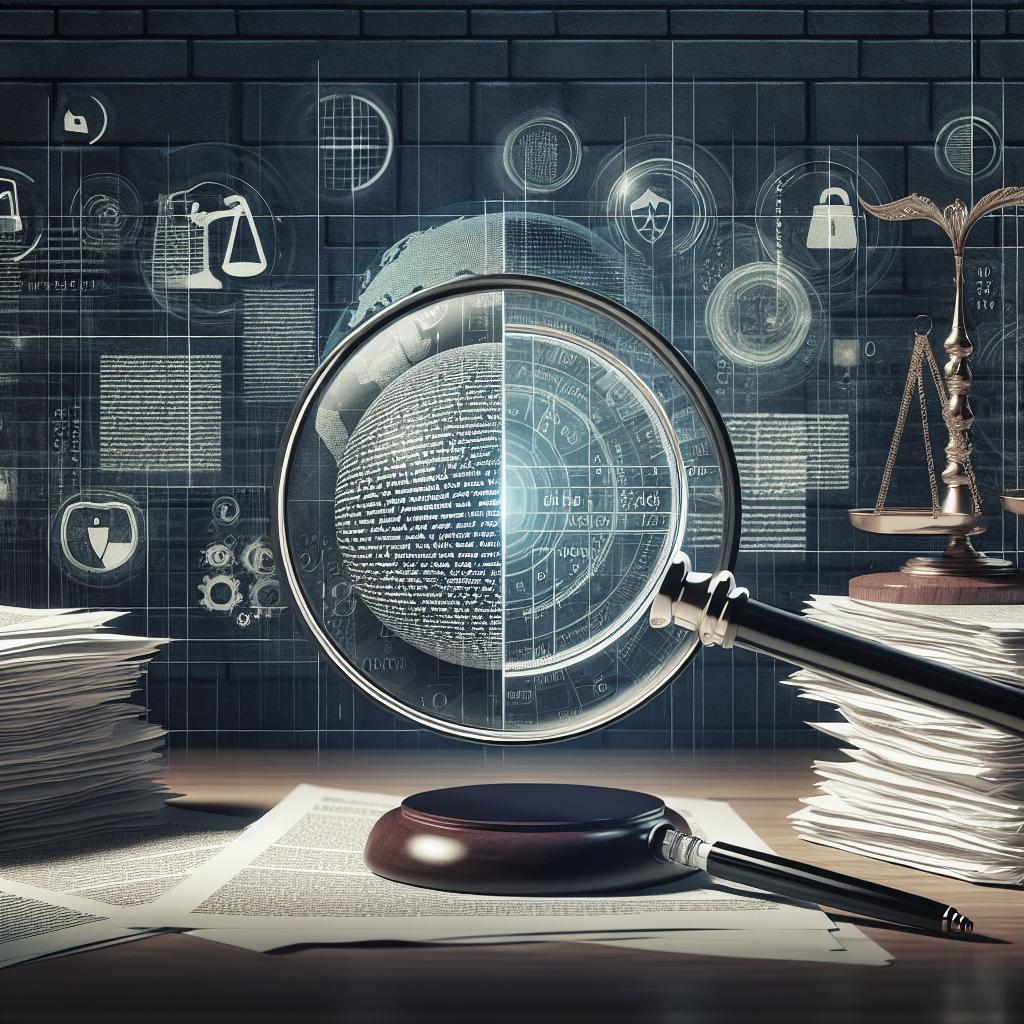“`html
Legal due diligence is an essential step in various transactions, ensuring all necessary information about a company or asset is gathered and analyzed. This comprehensive guide delves into the critical aspects of due diligence, breaking down the process into manageable steps. We explore what due diligence entails, why it’s vital, and provide a checklist that demystifies the process. Additionally, best practices and tips help practitioners optimize efforts and identify potential risks, while addressing what to expect if the tables are turned. Understanding the timeline of due diligence can aid in better planning and execution. Whether you’re preparing for an acquisition or simply learning about this critical aspect of business operations, this post offers valuable insights.
What is due diligence?
Due diligence is a comprehensive appraisal conducted by prospective buyers to assess the value and risk associated with a potential acquisition target. This process involves the detailed examination of a business’s legal, financial, operational, and market aspects. Its main purpose is to confirm the assertions made by the seller and discover any possible liabilities or other unintended features of the deal.
Due diligence extends beyond simple financial metrics to include legal documentation, contractual obligations, intellectual property rights, and compliance with regulatory standards. By doing so, it assists buyers in making informed decisions, ensuring that the obtained asset or company aligns with their strategic objectives.
Why conduct due diligence?
Conducting due diligence is crucial for mitigating risks before finalizing any business transaction. It protects the buyer by identifying potential legal risks, financial discrepancies, and underlying operational issues that may affect the value of the target.
Another key reason for conducting due diligence is to refine negotiation strategies. By understanding the intricacies of the target business, buyers can negotiate better terms, including price adjustments or warranties, thereby securing a more favorable outcome.
Due diligence checklist
1. Outline the process
The first step in due diligence is to clearly define the process and objectives. Identifying the specific areas to be examined and setting a timeline for completion ensures a systematic approach. Establishing benchmarks aids in maintaining the focus and efficiency of the analysis.
This stage involves drafting an initial checklist, which may include financial statements, employee contracts, intellectual property portfolios, litigation history, and other pertinent documents. The checklist serves as a guiding document that evolves as new findings emerge.
2. Assemble a team
Effective due diligence demands the expertise of a multidisciplinary team. This may consist of legal professionals, financial analysts, industry experts, and compliance officers. Each member brings unique skills and viewpoints, which are instrumental in conducting a thorough review.
Assigning specific roles and responsibilities ensures that all relevant aspects of the target are scrutinized. It also facilitates smooth coordination and communication among team members, which is vital for resolving complex issues promptly.
3. Conduct due diligence
The actual due diligence phase involves the rigorous examination of all gathered data. Legal representatives focus on contracts, regulatory compliance, and potential liabilities, while financial analysts perform audits and assess tax implications.
Continuous communication with the target company aids in clarifying ambiguities and providing additional information as needed. This phase may reveal hidden risks or opportunities, ultimately guiding the buyer’s decision-making process.
What is an example of due diligence?
A practical example of legal due diligence can be observed in the acquisition of a technology company. The acquiring firm undertakes due diligence to verify the ownership of patents, rights to software, and any pending litigation that could impact future operations.
The process could uncover risks such as potential patent infringements, lack of compliance with data protection laws, or unresolved employee grievances. Addressing these issues upfront helps avoid costly surprises post-acquisition.
Best Practice Tips for the Legal Due Diligence
Successful due diligence hinges on meticulous planning and execution. Establishing clear criteria for evaluating findings is imperative. This involves determining acceptable risk levels and formulating strategies to address any areas of concern.
Another best practice is maintaining open lines of communication between all parties involved. This fosters transparency and expedites any needed clarifications, thus ensuring a more efficient process.
3 tips to help perform due diligence
1. Take it seriously
Approaching due diligence with the seriousness it deserves is fundamental. Dismissing or overlooking any aspect can lead to severe repercussions, such as financial loss or legal battles that negatively impact the business’s reputation.
Invest the necessary time, effort, and resources to conduct a detailed and extensive review. This attitude will pay dividends in the long run by securing a comprehensive understanding of all potential risks and benefits.
2. Look for ways to mitigate any risks
Identifying risks is only one part of due diligence; the next step is to devise ways to mitigate them. This can involve negotiating indemnities, adjusting purchase prices, or implementing operational changes to limit exposure to identified vulnerabilities.
Risk mitigation strategies should be realistic and actionable, taking into account the specific circumstances and potential impact on the deal’s viability and value.
3. Negotiate the purchase agreement
The due diligence findings will heavily influence the negotiation of the purchase agreement. Having detailed insight into any risks and their mitigations allows for crafting a fair and protective agreement that addresses all key areas of concern.
Successful negotiations lead to agreements that safeguard the interests of both parties and establish a clear framework for post-acquisition operations, ensuring a successful integration into the acquirer’s business structure.
Summarize the Findings in a Legal Due Diligence Report
A comprehensive legal due diligence report summarizes all findings and their implications. This document not only highlights areas of concern but also provides recommendations for risk mitigation and strategic adjustments.
The report serves as a valuable tool for decision-makers, offering a clear picture of the transaction landscape and supporting informed decisions aligned with the organization’s strategic goals.
If someone is doing due diligence on you, what should you expect?
If your company becomes the subject of due diligence, expect thorough scrutiny of your legal, financial, and operational records. Transparency is crucial, so cooperate fully and ensure all documentation is current and accurate.
Prepare for detailed discussions about your company’s growth prospects, competitive advantages, and potential challenges. Demonstrating sound internal processes and compliance with industry regulations fosters confidence and trust among prospective buyers or partners.
How long is the due diligence period?
The length of the due diligence period varies based on the complexity of the transaction and the level of detail required for evaluation. Typically, it can range from a few weeks to several months.
Having a well-structured plan and a skilled team accelerates the process, helping to meet deadlines and reducing the chances of unforeseen delays that could potentially disrupt the deal.
Next step
With a thorough understanding of legal due diligence and its importance, the next step is to apply this knowledge practically. Investing in training and resources enhances your ability to conduct effective due diligence, minimizing risks and maximizing value in your business deals.
For more complex transactions, consider seeking expert advice or partnering with established firms specializing in due diligence. These steps ensure the best outcomes for your company, fostering sustainable growth and strategic success.
| Section | Summary |
|---|---|
| What is due diligence? | Comprehensive appraisal to assess value and risk, covering legal, financial, operational, and market aspects. |
| Why conduct due diligence? | Mitigates risks, aids negotiation, ensures informed decision making. |
| Due diligence checklist | Outlines a structured process including team assembly and execution. |
| What is an example of due diligence? | Example from technology sector: uncovering risks such as patent infringements and legal compliance. |
| Best Practice Tips for the Legal Due Diligence | Emphasizes planning, open communication, and transparent analysis. |
| 3 tips to help perform due diligence | Importance of a serious approach, risk mitigation, and strategic negotiation. |
| Summarize the Findings in a Legal Due Diligence Report | Offers a detailed summary and actionable recommendations. |
| If someone is doing due diligence on you, what should you expect? | Discussion on transparency, preparation, and regulatory compliance. |
| How long is the due diligence period? | Varies with complexity; typically from weeks to months. |
| Next step | Encourages practical application of due diligence knowledge and expertise. |
“`


